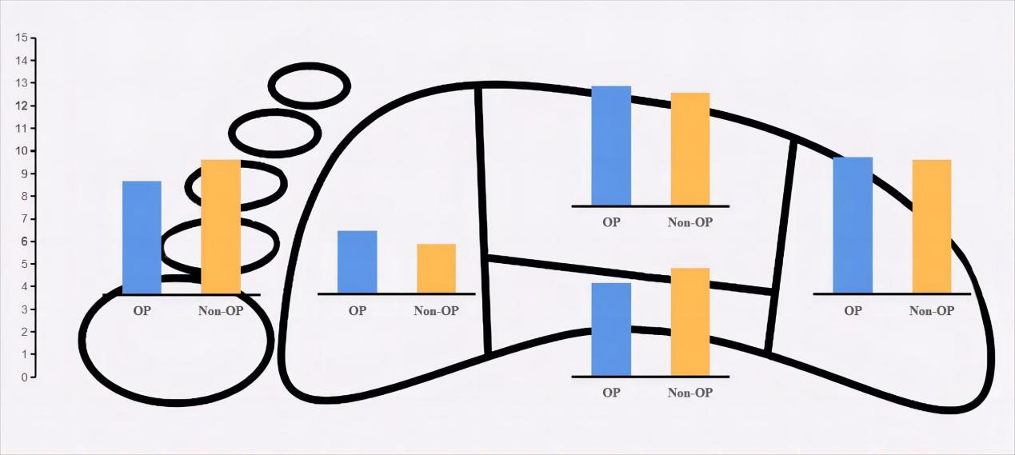German Congress of Orthopaedics and Traumatology (DKOU 2025)
Deutscher Kongress für Orthopädie und Unfallchirurgie 2025 (DKOU 2025)
Impact of isolated talonavicular arthrodesis on clinical, radiological, and plantar pressure outcomes: A retrospective analysis
2Center for Musculoskeletal Surgery, Charité – Universitätsmedizin Berlin, Corporate Member of Freie Universität Berlin and Humboldt-Universität zu Berlin, Berlin, Deutschland
3Move Ahead – Foot ankle and Sports Clinic, Berlin, Deutschland
Text
Objectives and questions: Arthrodesis is a well-established treatment for end-stage foot and ankle osteoarthritis, which can disrupt gait and alter plantar pressure distribution. However, the impact of hindfoot arthrodesis on plantar pressure distribution remains poorly understood. This study aimed to evaluate plantar pressure distribution, clinical outcomes, and radiographic changes in patients undergoing unilateral isolated talonavicular arthrodesis.
Material and methods: In this retrospective study, fifteen patients (63.2 ± 2.9 years) who underwent unilateral isolated talonavicular arthrodesis performed by a single surgeon were included. Postoperative plantar pressure distribution was evaluated across five regions of the foot at a mean follow-up of 33.3 ± 13.0 months, with comparisons made to the contralateral, unaffected foot. Clinical outcomes were assessed using the American Orthopaedic Foot and Ankle Society (AOFAS) hindfoot score, midfoot score, and the Foot Function Index (FFI). Radiographic evaluation included measurements of Meary's angle (MA), talonavicular coverage angle (TCA), and talus-first metatarsal angle (T1MA). Preoperative and postoperative data for these variables were compared to analyze surgical outcomes.
Results: No delayed union or nonunion occurred. Compared with the unaffected foot, pressure-time integrals (PTIs) in the forefoot, medial region, and the entire plantar surface were lower on the affected side, while PTIs in the lateral region, heel, and midfoot were higher, though none reached statistical significance (P > 0.05). Clinically, AOFAS midfoot scores improved from 27.0 ± 21.3 to 78.9 ± 21.0 (P < 0.001), hindfoot scores from 25.1 ± 23.8 to 77.9 ± 14.9 (P < 0.001), and FFI decreased from 54.0% ± 19.8% to 16.5% ± 15.9% (P < 0.001). Radiographically, the TCA decreased significantly from 12.3° ± 6.3° to 4.7° ± 5.2° (P = 0.002), while changes in MA and T1MA were not significant (P = 0.078 and P = 0.123, respectively). No significant correlations were observed between preoperative and postoperative AOFAS scores or FFI and pedobarographic results on the affected side. However, these scores showed significant correlations with changes in T1MA between preoperative and postoperative assessments. Preoperative T1MA and postoperative MA were significantly associated with PTIs in specific regions of the plantar surface on the affected side. Additionally, BMI was correlated not only with PTIs in certain plantar regions but also with postoperative FFI.
Discussion and conclusions: Our results suggest that isolated talonavicular arthrodesis can provide satisfactory functional outcomes and achieve a symmetrical plantar pressure distribution during walking on both sides.
Figure 1 [Fig. 1]
Figure 1: Plantar pressure comparison: operated vs. non-operated feet.




